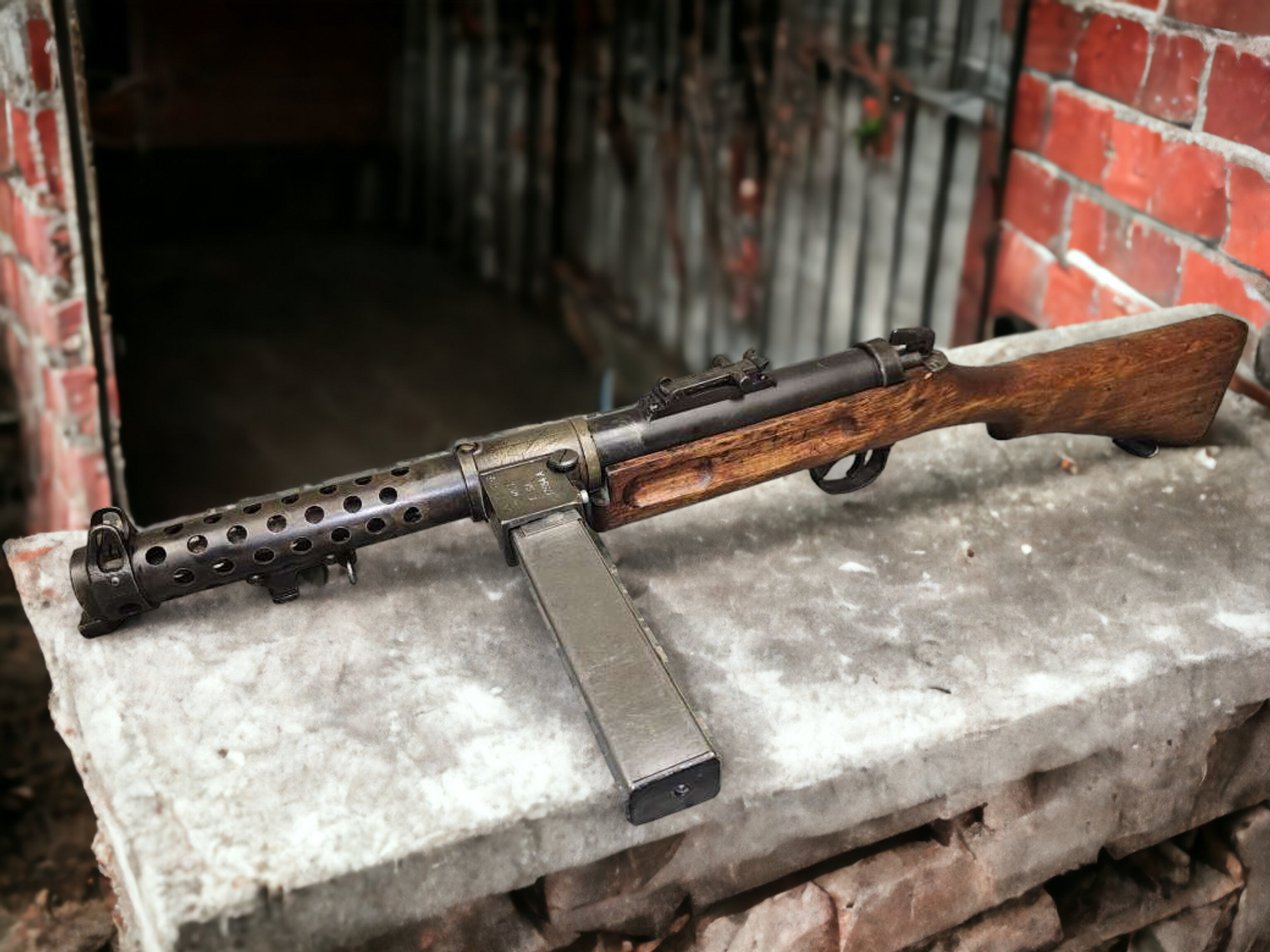The KP m/44 (Finnish: Konepistooli malli 1944, lit. 'Submachine gun, model 1944'), nicknamed "Peltiheikki" or "Pelti-kp", which could be translated as "sheet-metal Heikki" and "sheet-metal machine pistol"/"sheet-metal submachine gun" respectively, was a Finnish 9mm copy and modification of the Soviet mass-produced 7.62 mm submachine gun PPS-43.
Starting in 1942, and becoming more common as the Finnish-Soviet Continuation War progressed, both PPS-42 and PPS-43 began showing up among Soviet units, and many were captured by the Finnish Army. The simple construction of these weapons immediately caught the interest of the Finnish arms industry. It was decided that they would try to copy the sheet-steel stamped construction process, but redesigned to use the 9×19mm Parabellum round instead of the original Soviet 7.62×25mm Tokarev and to use the magazine of the Suomi KP/-31 submachine gun, the standard SMG in Finnish service at that time. The new submachine gun was a much cheaper design than the Suomi submachine gun and could be manufactured much faster.
Movable Bolt and removable magazine, Stick magazine is missing internals.
 Sales@herooutdoors.com
Sales@herooutdoors.com
 USD
USD
























